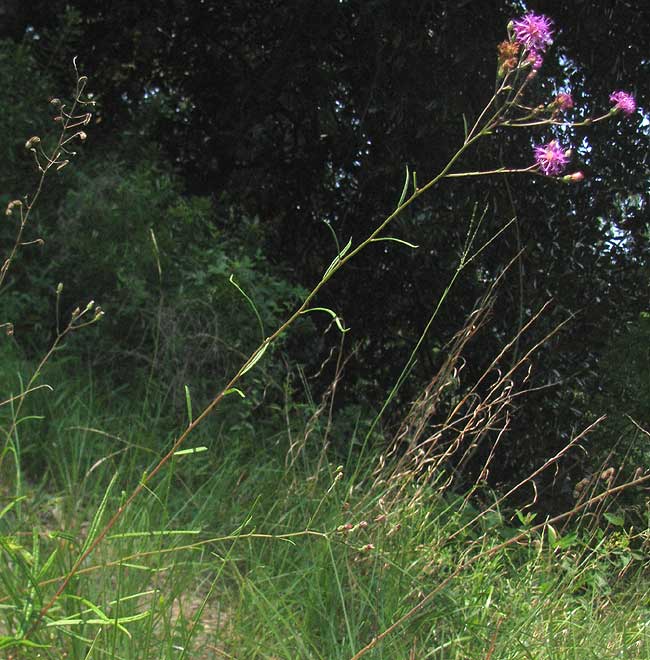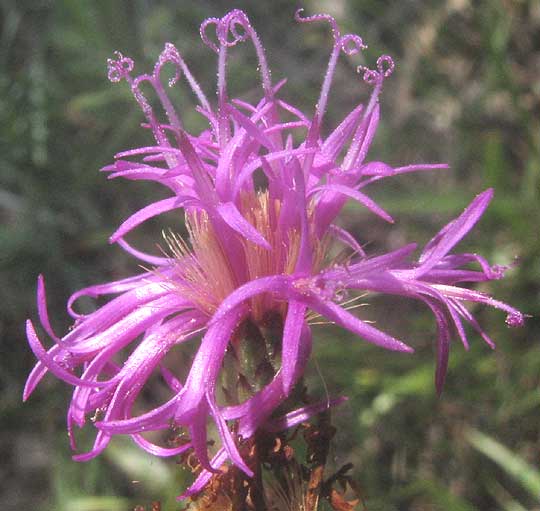Excerpts from Jim Conrad's
Naturalist Newsletter

from the the July 1, 2012 Newsletter issued from the woods of the Loess Hill Region a few miles east of Natchez, Mississippi, USA
SLENDER-LEAFED IRONWEED
On the same dry, open, savanna-like loess ridge the Sand Hickories occupied, and just a few feet from them, a slender, purple-blossomed, Composite Family wildflower caught my attention, as shown above. Up close, the heads' individual flowers were exceptionally ornate, as seen below:

In that picture you can see that each purple corolla bears long, slender lobes -- very long compared to most other Composite Family disk flowers -- and that the flowers arise amidst dense tufts of very slender, stiff, brownish hairs encircling the base of each corolla and crowning each achene -- achenes being dry, one-seeded fruits. The collection of such hairs (or scales, bristles, crown, etc.) atop a composite flower's achene is known as the pappus.
Because of the flower color, the corollas' long lobes, and the dry habitat, at first I thought we had one of several species of blazing stars, genus Liatris. However, blazing stars generally cluster their flowers in slender spikes or spike-like heads, not in widely separated heads as with this plant. The long, brown pappus bristles reminded me of the ironweeds, genus Vernonia, so I checked to see if in this area we have an ironweed species looking like our find.
And, sure enough, there it was: Our plant is VERNONIA ANGUSTIFOLIA, which doesn't seem to have a commonly accepted English name. Most books and the USDA appear to call it Tall Ironweed, though our plant was only about a yard (meter) tall, and another much larger and more common ironweed species already is known as Tall Ironweed. At least one authority calls it Narrow-leafed Ironweed, so we'll call it that.
Narrow-leafed Ironweeds are endemic to the US Southeast, from North Carolina mostly along the Coastal Plain to Louisiana. It's not found as far inland and north as Tennessee and Kentucky.